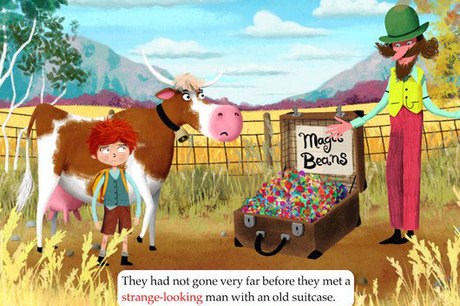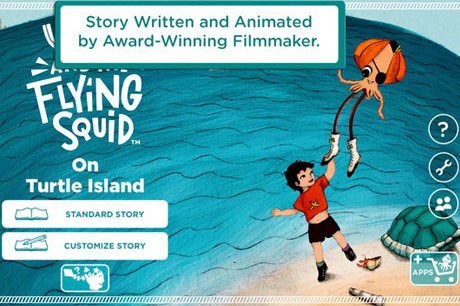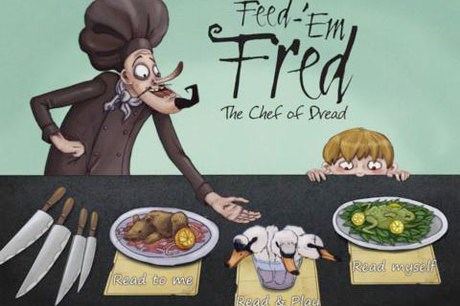New resources show how tablets can aid literacy
Monday, June 27, 2016
As learning how to swipe a screen becomes as much a part of a young child’s development as turning the page of a book, what role does digital technology play in helping children learn to read?

New research from the National Literacy Trust (NLT) compared the way parents use touchscreens to read at home with children, with their use in early years settings. It found early years practitioners are less confident in using them with children than parents.
In the survey of 1,000 parents of three- to five-year-olds, nearly all (97 per cent) had a touchscreen device at home, such as a smartphone or tablet computer. Meanwhile, access to touchscreens in early years settings is up, from 41 per cent in 2014 to 58 per cent in 2015.
However, fewer early years practitioners used touchscreens to share stories with children in their care in 2015 (41 per cent) than in 2014 (49 per cent). And of those who did, just over half (55 per cent) said they were confident doing so, compared with 82 per cent who said they were confident using books.
The NLT has published new resources to support the use of technology as an early communication, language and literacy aid – produced as part of the HELLO (Helping Early Language and Literacy Outcomes) programme, funded by the Department for Education.
While the NLT would not advise tablet use over books, the report acknowledges its role in supporting more reluctant readers, particularly boys.
The NLT argues it does not matter if children are getting into reading via tablets because the benefits outweigh the negatives.
Charlotte Billington, project manager of the early years team at the NLT, said, ‘It’s interesting to see the impact of technology. We found that boys spend more time on touchscreens, but it’s really positive that they’re using tablets to engage in reading longer.’
She added, ‘Technology is everywhere and young children are increasingly using touchscreens. However, early years practitioners are not using technology to the same degree as parents and only half are confident doing so to develop children’s early communication skills – although using technology can particularly benefit boys and disadvantaged children.’
The HELLO project worked with teaching schools and nurseries to develop best practice videos (see below).
Using tablets
The research also found that parents are not using tablets to read with children in the same way as they use a physical printed book. The NLT found a lack of guidance and has created an ‘apps guide’ in response.
Ms Billington said, ‘We looked at areas in the EYFS – communication, language and literacy, speaking, reading and writing – to support children’s literacy learning. There are some brilliant story apps but also others that are more creative and open-ended.’
She added that some story apps, for example those created by developer Nosy Crow, are ‘quite interactive, family fairy tales… but if parents aren’t confident, there’s not as much interactivity. There’s lots of advice and tips, but tablets aren’t a replacement for adult interaction.’
Ms Billington said parents should share stories with children using a tablet in the same way they use books – by asking questions and building up vocabulary. ‘If you are using a touchscreen, think how you model your behaviour,’ she added.
Best Practice
Harrington Nursery School, a nursery teaching school in Derby, is one of the settings that features in the HELLO practice videos.
‘We introduced tablets into our continuous provision in 2013 after undertaking research into their use, particularly for disadvantaged boys.
‘We decided that if used effectively, tablets could motivate learning and give children the opportunity to explore and learn new skills. Through the continual reviewing and observing of the use of tablets in our continuous provision we noticed that some boys were passive in their use of tablets, which led to further research to find the best apps to support active learning with a focus on communication, language and literacy.
‘Tablets are now used in all areas of the continuous provision and are linked to children’s interest and themes, including the use of gadgets – for example, a microscope linking to the theme of minibeasts. We use a range of apps differentiated to meet the needs of all children for emerging, developing and higher-level skill development.
‘We noticed that boys in particular were motived by all forms of digital technology and we now use other technologies to enhance the provision. Our recent space theme was enhanced by a variety of digital media – for example, projecting the moon onto the ceiling and playing Star Wars music, while children held torches projecting space images onto surfaces. We used the interactive TV to keep in touch with what Tim Peake was doing, enabling the children to engage in purposeful role-play. Several parents communicated that they were surprised their child was able to discuss Tim Peake and his mission to the space station.’
Lindsay Fravolini, HLTA responsible for developing digital media at Harrington
STORY APPS GUIDE
The NLT has developed a new website, LiteracyApps.org, as a guide to choosing apps to help develop early language and literacy. Here are some of its reviews.

Age 3-5
Jack and the Beanstalk
Nosy Crow is great at developing interactive storybook apps for younger children. These apps allow children to be read to or read along themselves. The story is wonderfully illustrated with narration from a child, which is a great touch. Words are highlighted as they are read, supporting word recognition, and there is a wide range of vocabulary used. Nosy Crow has a number of other stories available, following a similar format.
£3.99 from the App Store

Age 4-5
Yuri and the Flying Squid onTurtle Island
A highly personalisable storybook with a great message. Children and adults are able to change the main character so it looks like them, and to make their own name the hero of the story. You are also able to record the storybook yourself, which is great for making sure children develop a love for reading. The app is responsive to touches and swipes with lovely moving illustrations. The story follows a character who needs to clean up the beach from pollution – a great opportunity to talk to children about the environment – with tips for parents to do this within the app. Also available in Spanish.
£2.99 from the App Store

- The new practitioner resources are available at www.literacytrust.org.uk/early-years-tech and through the National Literacy Trust Network. The NLT’s Words for Life website provides support for parents: www.wordsforlife.org.uk




